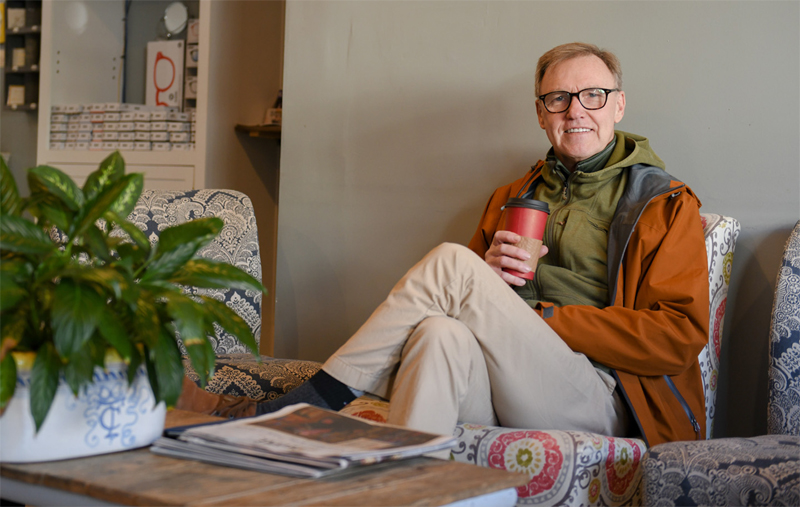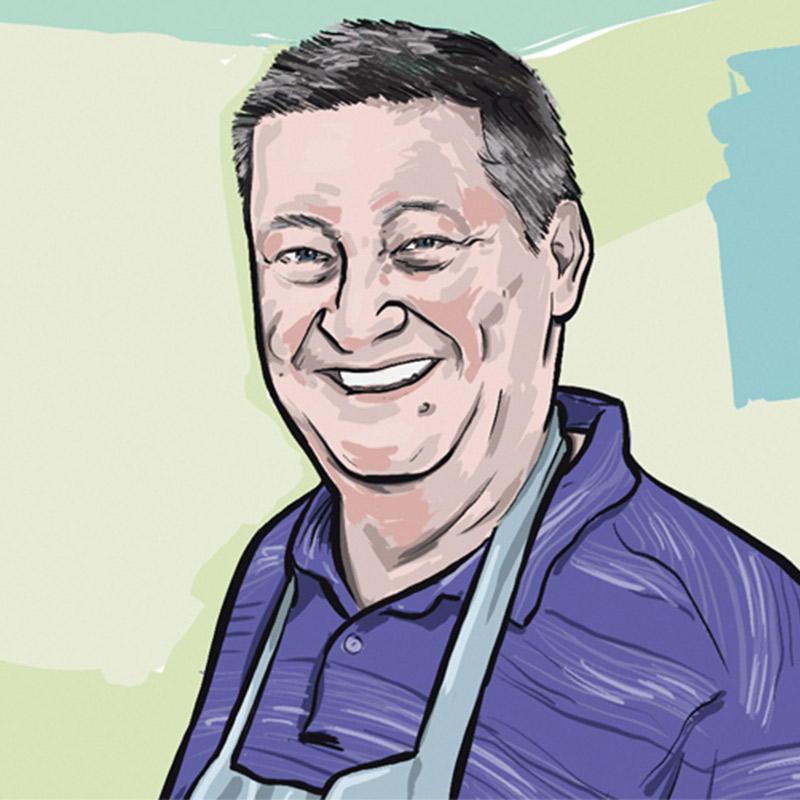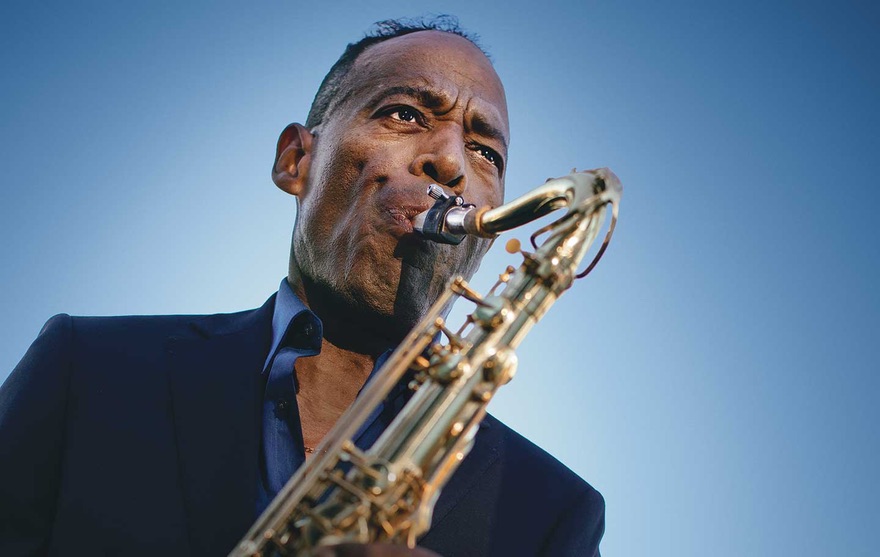Taste Test After Tongue Cancer

May 25, 2020
In late 2017, Christer Carlsson noticed a dull, persistent pain in his left ear. The 65-year-old Spring Lake, New Jersey, resident mentioned it to his general practitioner, who took a look inside his ear and saw nothing wrong.
So for the better part of the next year, Christer just dealt with the earache. “The pain wasn’t enormous,” says Christer, who is originally from Malmo, Sweden. “It was just dull enough to notice it, and it never went away.”
Finally, he asked his doctor about it again and was advised to see an ear, nose and throat (ENT) specialist. Sean D. Houston, M.D., a head and neck surgeon, examined his ears and told Christer that he wanted to run more tests—that very day. As a seasoned surgeon, Dr. Houston knew some of the signs of head and neck cancers. “I really didn’t think it would be that bad,” Christer says. “But when he said I shouldn’t wait any longer to get the tests, I got nervous.”
On December 21, 2018, a biopsy confirmed that Christer had tongue cancer, a type of head and neck cancer that starts in the cells of the tongue. All along, the cancer on his tongue caused his lymph nodes to swell, which clogged his ear and led to the dull pain.
Hope Amidst Fear
Christer, who’s been married to his wife, Susan, for 38 years and is the father of two grown children, vividly remembers the moment his doctor told him he had cancer. “It felt like my whole body was shaking,” he says. “The doctor said that while all cancers are serious, this one is very serious. It took me a while to process that. I was in so much shock.”
While this cancer is serious, it’s highly treatable if detected before it spreads to other parts of the body. If it does not spread beyond the tongue, the five-year survival rate is 78 percent, according to the American Cancer Society.
Christer’s ENT recommended he see Douglas Miller, M.D., radiation oncologist and medical director of Radiation Oncology at Jersey Shore University Medical Center, to create a treatment plan. Beating it required treating it quickly.
At the time, Dr. Miller was about to begin the third phase of a clinical trial to test a drug that could potentially mitigate some of cancer treatment’s painful side effects, including burns in the mouth and throat, and the inability to eat. “This new drug, developed by a private company, is an IV infusion given right before radiation treatment,” says Dr. Miller, lead researcher on the clinical trial. “It helps protect healthy tissue from radiation damage and improve outcomes by attacking cancerous tissues.”
The trial would last seven weeks and require 35 treatments. It already had shown a significant decrease in the severity and longevity of treatment side effects, so Christer was in.
Here’s what treatment on the trial looked like:
- First, a 45-minute IV infusion of the trial drug
- Next, a 20-minute radiation treatment
- Finally, two hours of liquid and steroid IV infusions
This same routine had to be done every day for 35 days, and once a week there was an additional hour-long chemotherapy treatment.
At first, Christer didn’t feel many side effects of the treatment, but eventually, it became almost unbearable. He lost nearly 30 pounds, food tasted like metal, and eventually he had to use a feeding tube. He developed blisters in his throat, and felt weak and nauseous.
“If a patient can tolerate the treatment, follows our specific recommendations and takes the correct drugs at the right times, they can increase the probability that the disease doesn’t come back,” says Peter Mencel, M.D., a medical oncologist at Jersey Shore who administered Christer’s weekly chemotherapy. “It’s a very successful treatment.”
A Shining Example
Because the trial was a blind study (where patients don’t know which treatment they are receiving to avoid a placebo effect), Christer doesn’t know if he received the drug, but he assumes he did. His cancer began regressing after only five treatments, he had no infections, and he never required hospitalization.
A few weeks following completion, his weight increased and he started to feel stronger. “I started to walk in the mornings again, and then some of my taste came back,” he says.
Less than a year later, he’s feeling good and credits his medical team and family support for his recovery. He recently completed swallow therapy, and he even started traveling again.
“We’re going on a year with negative scans, which is fantastic news,” Dr. Miller says. “Christer is a shining example of the kind of success that’s possible through clinical trials.”
Next Steps & Resources:
- Meet our source: Peter Mencel, M.D.
- To make an appointment with Peter Mencel, M.D. or another provider, call 800-822-8905 or visit our website
The material provided through HealthU is intended to be used as general information only and should not replace the advice of your physician. Always consult your physician for individual care.
Cancer-free After Clinical Trial

When Alain Fortier, 61, began experiencing skin rashes that came and went, he thought it might just be allergies.

And the Man Played On
Melvin Taylor is known for his soulful stylings on the saxophone. Playing since the age of 10, he calls himself a “lifer,” having played along the Jersey Shore as a high school student and going on to play in clubs and hotels throughout his career.
